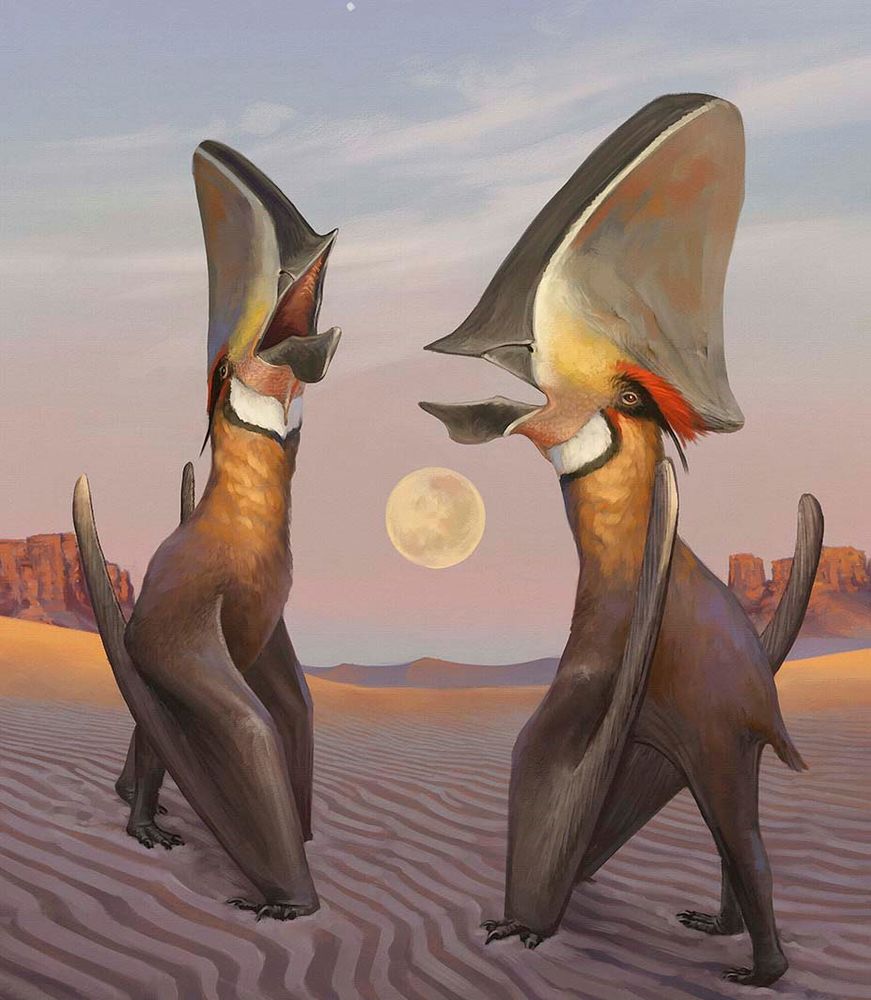

Combining fossils and lab experiments, we found that simple changes in tooth #development explain 6 million years of molar #evolution in #voles 🐭🦷
Shoutout to my coauthors @cnrs.fr @helsinki.fi @gtk-fi.bsky.social!
www.pnas.org/doi/10.1073/... #FossilFriday
Some of the last survivors. They lived in New Mexico, 66 million years ago. Among them was Alamosaurus, the size of a jetplane.
We unveiled them, and their true age, today in a new paper in
@science.org !

Some of the last survivors. They lived in New Mexico, 66 million years ago. Among them was Alamosaurus, the size of a jetplane.
We unveiled them, and their true age, today in a new paper in
@science.org !

A touching tribute to the life, career, and discoveries of Mark Norell, from his long-time friend and field companion, Mike Novacek. In @nature.com
www.nature.com/articles/d41...

A touching tribute to the life, career, and discoveries of Mark Norell, from his long-time friend and field companion, Mike Novacek. In @nature.com
www.nature.com/articles/d41...
#Paleontology #Evolution #Fossils
🧪🐍🦴⚒️
Paper
www.nature.com/articles/s41...

#Paleontology #Evolution #Fossils
🧪🐍🦴⚒️
Paper
www.nature.com/articles/s41...
Hello to Breugnathair, a new fossil from the Jurassic of Skye with a curious mix of snake & lizard features, showing that early squamate evolution was complex
www.bbc.co.uk/news/article...

Hello to Breugnathair, a new fossil from the Jurassic of Skye with a curious mix of snake & lizard features, showing that early squamate evolution was complex
www.bbc.co.uk/news/article...
Congratulations and special thanks to the authors!
You can read the paper using the link below
doi.org/10.1038/s415...

Congratulations and special thanks to the authors!
You can read the paper using the link below
doi.org/10.1038/s415...
theconversation.com/many-animals...

theconversation.com/many-animals...
Read it now in Swiss Journal of Palaeontology: sjpp.springeropen.com/articles/10....

Read it now in Swiss Journal of Palaeontology: sjpp.springeropen.com/articles/10....
@7brumas.bsky.social
#macroevolution
academic.oup.com/sysbio/advan...

@7brumas.bsky.social
#macroevolution
academic.oup.com/sysbio/advan...

Ratfish have a second jaw on their foreheads - CT + histology show they’re real teeth, built from the same tissues and signals as oral teeth.
www.washington.edu/news/2025/09...

Ratfish have a second jaw on their foreheads - CT + histology show they’re real teeth, built from the same tissues and signals as oral teeth.
www.washington.edu/news/2025/09...
Dans ce fil, je vous explique ce que les molaires des campagnols nous apprennent sur l’ #évolution (le post n°16 va vous surprendre !) 🐭🦷🤯
#vulgarisation #thèse #paléontologie
Qu’est-ce que ça nous apprend sur l’évolution ? 🧵👇 1/21 #evodevo #vulgarisation
📷 Hanna Knutsson (CC BY-NC-ND 2.0)/Lafuma et al.
Dans ce fil, je vous explique ce que les molaires des campagnols nous apprennent sur l’ #évolution (le post n°16 va vous surprendre !) 🐭🦷🤯
#vulgarisation #thèse #paléontologie
Qu’est-ce que ça nous apprend sur l’évolution ? 🧵👇 1/21 #evodevo #vulgarisation
📷 Hanna Knutsson (CC BY-NC-ND 2.0)/Lafuma et al.


Qu’est-ce que ça nous apprend sur l’évolution ? 🧵👇 1/21 #evodevo #vulgarisation
📷 Hanna Knutsson (CC BY-NC-ND 2.0)/Lafuma et al.

(art by shunovachrono)


(art by shunovachrono)
#FlyingReptiles #paleontology #Caiuajara #Brazil #dinosaurs

#FlyingReptiles #paleontology #Caiuajara #Brazil #dinosaurs
the graphical abstract:

the graphical abstract:


This beastie will help clarify the early evolution of iguanodontids, so I'm quite excited for it to (eventually) get published!

This beastie will help clarify the early evolution of iguanodontids, so I'm quite excited for it to (eventually) get published!

